While most people think of ficus trees as towering indoor plants, several varieties naturally stay under 3 feet tall. You’ll find these compact specimens perfect for brightening up tight spaces, from studio apartments to office cubicles. Whether you’re drawn to the twisted trunk of a Ginseng Bonsai or the delicate leaves of a Miniature Benjamina, there’s a tiny ficus that’ll transform your small corner into a slice of indoor jungle.
Contents
- 1 1. Ginseng Bonsai Ficus
- 2 2. Weeping Chinese Banyan Ficus
- 3 3. Creeping Fig House Plant
- 4 4. Miniature Ficus Benjamina Tree
- 5 5. Dwarf Rubber Plant
- 6 6. Taiwan Ficus Bonsai Tree
- 7 7. Miniature Fiddle Leaf Ficus
- 8 8. Tiger Bark Ficus
- 9 9. Green Island Ficus Shrub
- 10 10. Willow Leaf Ficus Bonsai
- 11 11. Mini Mexican Ficus Tree
1. Ginseng Bonsai Ficus
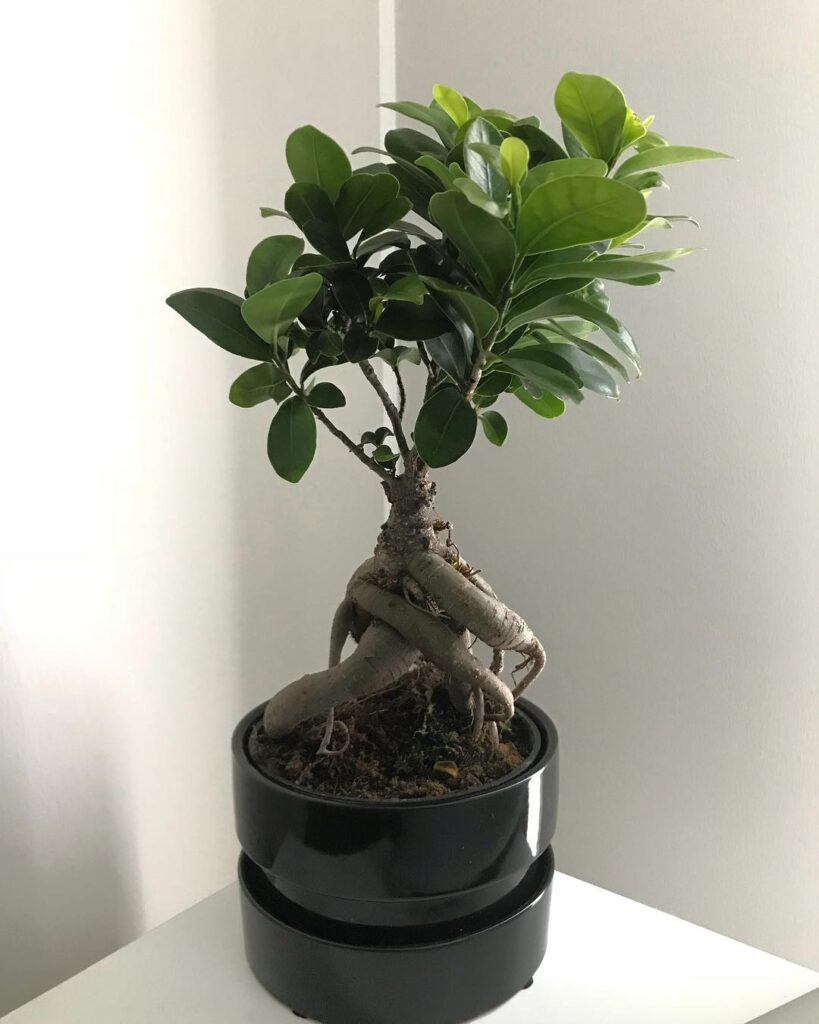
The Ginseng Bonsai Ficus (Ficus microcarpa) is a distinctive dwarf tree characterized by its thick, exposed roots that resemble ginseng, hence its common name. This compact plant features a bulbous base that evolves into a slender trunk crowned with small, oval-shaped dark green leaves. As a tropical plant adapted for indoor growing, it makes an excellent choice for bonsai enthusiasts, combining the artistic appeal of traditional bonsai with relatively easy care requirements.
- Light: Bright indirect sunlight; can tolerate some direct morning sun but protect from harsh afternoon rays
- Water: Keep soil consistently moist but not waterlogged; water when top inch of soil feels dry
- Humidity: Prefers 40-50% humidity; mist leaves regularly or use humidity tray
- Soil: Well-draining bonsai mix containing akadama, pumice, and organic matter
- Temperature: 65-85°F (18-29°C); protect from cold drafts
- Fertilizer: Feed with balanced liquid fertilizer every 2-4 weeks during growing season
- Pruning: Regular trimming of new growth to maintain shape; remove yellowing leaves promptly
- Repotting: Every 2-3 years in spring, using fresh bonsai soil
2. Weeping Chinese Banyan Ficus
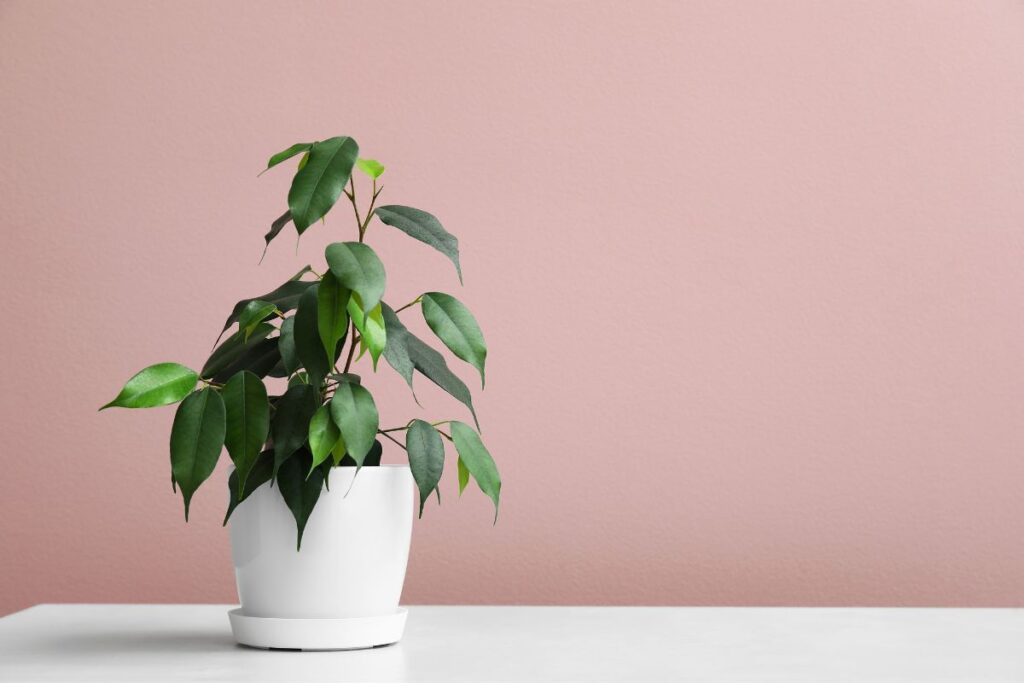
The Weeping Chinese Banyan Ficus (Ficus benjamina) is a graceful, compact tree characterized by its drooping branches and small, glossy green leaves. Popular as both an indoor houseplant and outdoor ornamental in warm climates, this miniature variety typically reaches heights of 3-6 feet when grown in containers. Its delicate cascading form and adaptability to pruning make it an excellent choice for small spaces, while its aerial roots can create interesting shapes and patterns as they develop.
- Light: Bright, indirect sunlight; can tolerate some direct morning sun but avoid harsh afternoon light
- Water: Moderate watering when top inch of soil feels dry; reduce watering in winter
- Soil: Well-draining, rich potting mix with pH 6.0-6.5
- Humidity: Prefers high humidity (50-70%); benefits from regular misting
- Temperature: 65-85°F (18-29°C); protect from cold drafts
- Fertilizer: Feed monthly during growing season with balanced liquid fertilizer
- Environment: Dislikes sudden changes in temperature or location
- Container: Use pot with adequate drainage holes; repot every 2-3 years
3. Creeping Fig House Plant
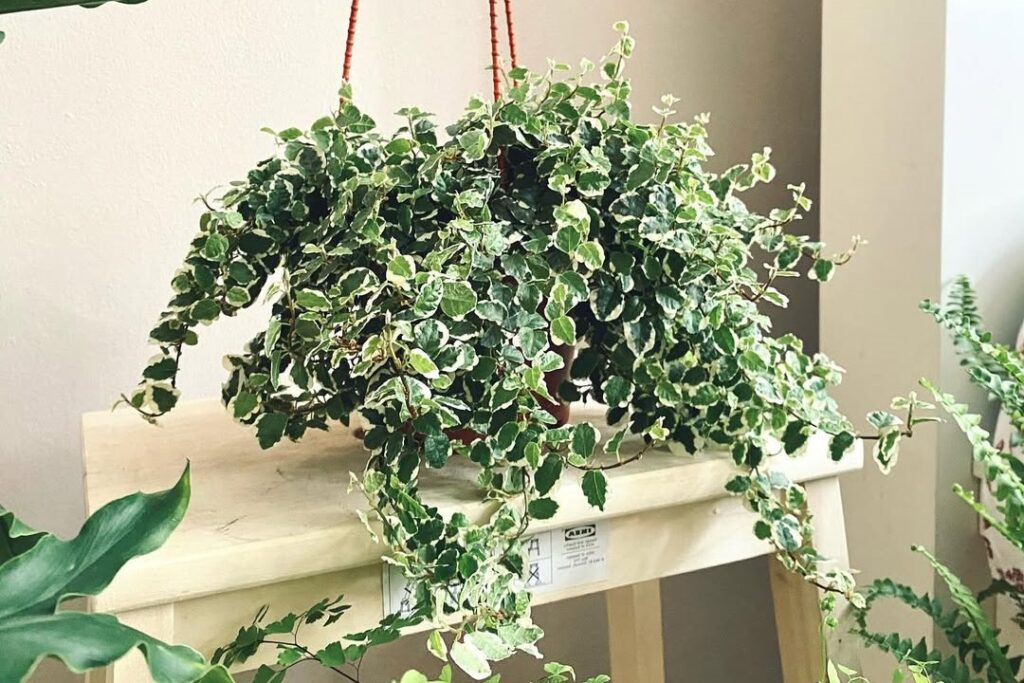
Creeping Fig (Ficus pumila) is a fast-growing, climbing vine with small, heart-shaped leaves that creates a dense mat of foliage when grown indoors. This diminutive member of the Ficus family attaches itself to surfaces using aerial rootlets, making it an excellent choice for topiaries, hanging baskets, or as a wall-covering houseplant. While young leaves start small and delicate, mature leaves can become larger and more leathery in texture.
- Light: Bright, indirect light; can tolerate moderate shade but may grow slower; avoid direct sunlight
- Water: Keep soil consistently moist but not waterlogged; water when top inch of soil feels dry
- Soil: Well-draining, rich potting mix with added organic matter
- Humidity: Prefers high humidity; regular misting or humidity tray beneficial
- Temperature: 65-75°F (18-24°C); protect from cold drafts
- Fertilizer: Feed monthly during growing season with balanced liquid fertilizer
- Support: Provide trellis, pole, or rough surface for climbing
- Pruning: Trim regularly to control size and maintain desired shape
4. Miniature Ficus Benjamina Tree
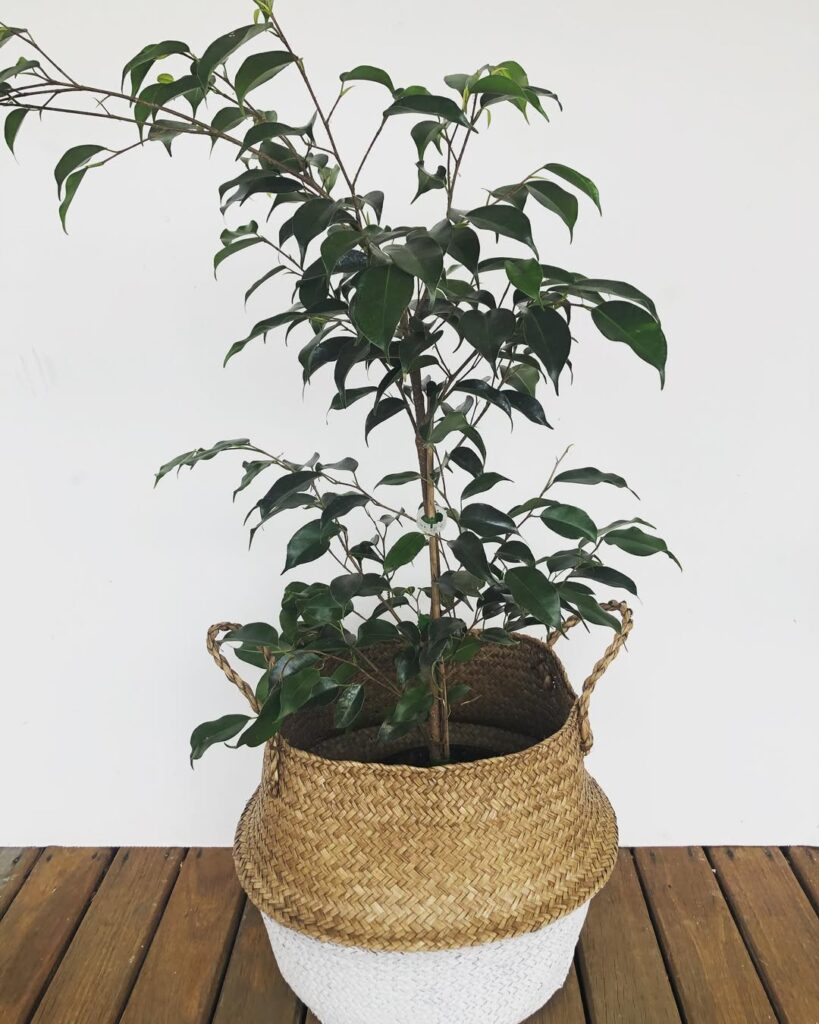
The Miniature Ficus Benjamina, also known as the Weeping Fig, is a compact version of its larger cousin, typically growing to heights between 2-3 feet when kept indoors. This smaller variety maintains the same glossy, dark green leaves and gracefully drooping branches as the standard version but in a more manageable size perfect for apartments, offices, and small living spaces. The tree can be shaped through regular pruning and responds well to bonsai techniques, making it an excellent choice for those wanting the aesthetic appeal of a tree without sacrificing limited space.
- Light: Bright, indirect sunlight; avoid direct afternoon sun; can tolerate moderate shade but prefers consistent brightness
- Water: Keep soil consistently moist but not waterlogged; water when top inch of soil feels dry
- Soil: Well-draining, rich potting mix with good organic content
- Humidity: Moderate to high; benefits from regular misting
- Temperature: 65-75°F (18-24°C); protect from cold drafts
- Fertilizer: Feed monthly during growing season with balanced liquid fertilizer
- Container: Use pot with drainage holes; repot every 2-3 years
- Air Circulation: Good airflow while avoiding direct drafts from vents or windows
5. Dwarf Rubber Plant
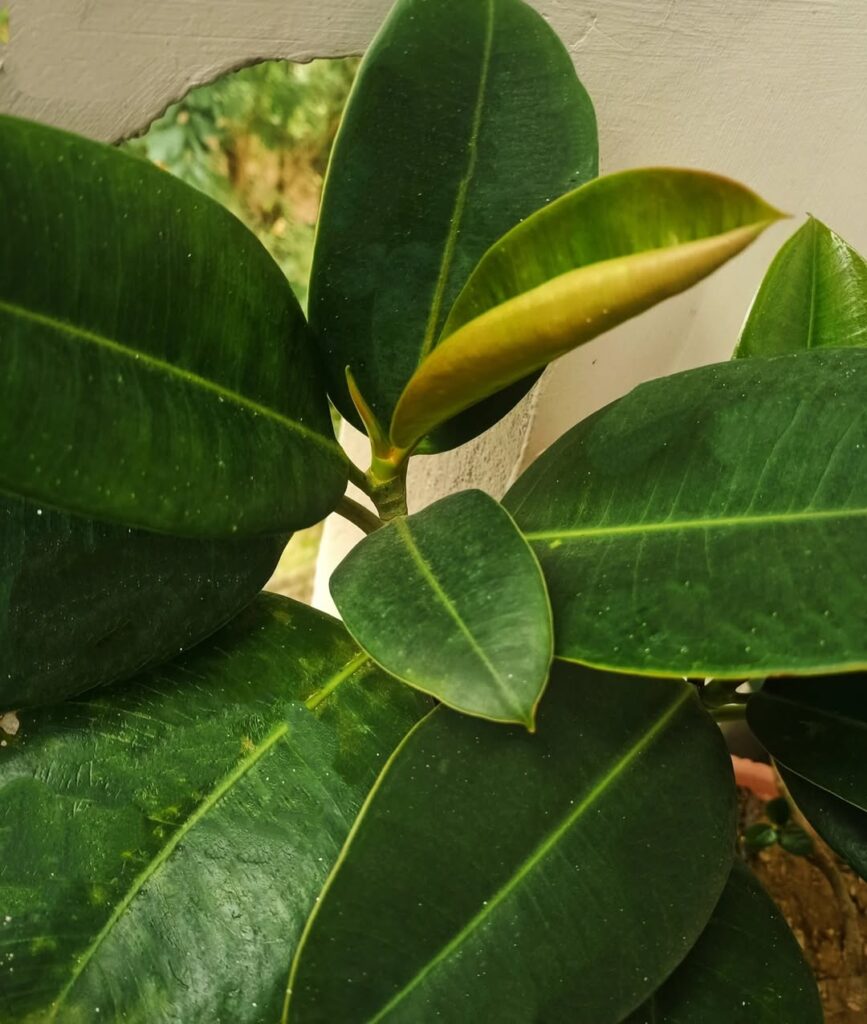
The Dwarf Rubber Plant (Ficus elastica ‘Decora’) is a compact variety of the classic rubber plant, typically growing to only 2-3 feet tall when kept indoors. This miniature version maintains the same glossy, thick, dark green leaves as its larger cousin but in a more manageable size perfect for small spaces. Its sturdy nature and air-purifying qualities make it an excellent choice for homes and offices, while its reduced stature allows it to thrive on tabletops, shelves, or as a statement piece in tight corners.
- Light: Bright, indirect sunlight; can tolerate moderate light but may lose lower leaves in low light conditions
- Water: Allow top 1-2 inches of soil to dry between waterings; reduce watering in winter
- Soil: Well-draining, rich potting mix with added perlite
- Humidity: Moderate to high; benefits from regular misting
- Temperature: 60-80°F (15-27°C); protect from cold drafts
- Fertilizer: Monthly feeding during growing season with balanced houseplant fertilizer
- Container: Pot with drainage holes; repot every 2-3 years
6. Taiwan Ficus Bonsai Tree
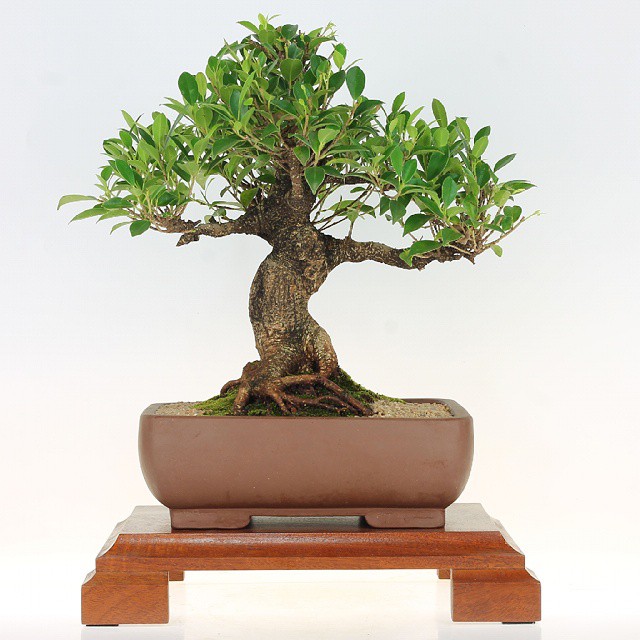
The Taiwan Ficus bonsai tree (Ficus retusa) is a popular miniature tree choice for indoor spaces, characterized by its small, oval-shaped glossy leaves and gracefully curved trunk. This versatile bonsai specimen develops aerial roots and can form impressive root structures over time, making it an excellent choice for creating unique shapes and styles. Native to Southeast Asia, the Taiwan Ficus is particularly well-suited for beginners due to its forgiving nature and ability to recover quickly from pruning mistakes.
- Light: Bright, indirect sunlight; can tolerate some direct morning sun but protect from harsh afternoon rays
- Water: Keep soil consistently moist but not waterlogged; water when top inch of soil feels dry
- Soil: Well-draining bonsai mix containing akadama, pumice, and organic matter
- Temperature: 65-85°F (18-29°C); protect from cold drafts and temperatures below 60°F
- Humidity: Prefers 50% or higher humidity; benefits from regular misting
- Fertilizer: Feed every 2-4 weeks during growing season with balanced bonsai fertilizer
- Pruning: Trim regularly to maintain shape; can be pruned year-round
- Repotting: Every 2-3 years in spring
7. Miniature Fiddle Leaf Ficus

The Miniature Fiddle Leaf Ficus (Ficus lyrata bambino) is a compact version of the popular Fiddle Leaf Fig, reaching only 3-4 feet in height at maturity. This dwarf cultivar maintains the same distinctive violin-shaped leaves as its larger counterpart but in a more manageable size perfect for apartments, small offices, or cozy corners. Its smaller stature doesn’t compromise its striking appearance, making it an excellent choice for plant enthusiasts who want the dramatic look of a Fiddle Leaf Fig without the overwhelming size.
- Light: Bright, indirect sunlight; can tolerate some direct morning sun; protect from harsh afternoon rays
- Water: Allow top 1-2 inches of soil to dry between waterings; reduce watering in winter
- Soil: Well-draining, rich potting mix with added perlite
- Humidity: Moderate to high (40-60%); benefits from regular misting
- Temperature: 60-75°F (15-24°C); avoid cold drafts and sudden temperature changes
- Fertilizer: Feed monthly during growing season with balanced liquid fertilizer
- Container: Use pot with drainage holes; repot every 2-3 years
8. Tiger Bark Ficus
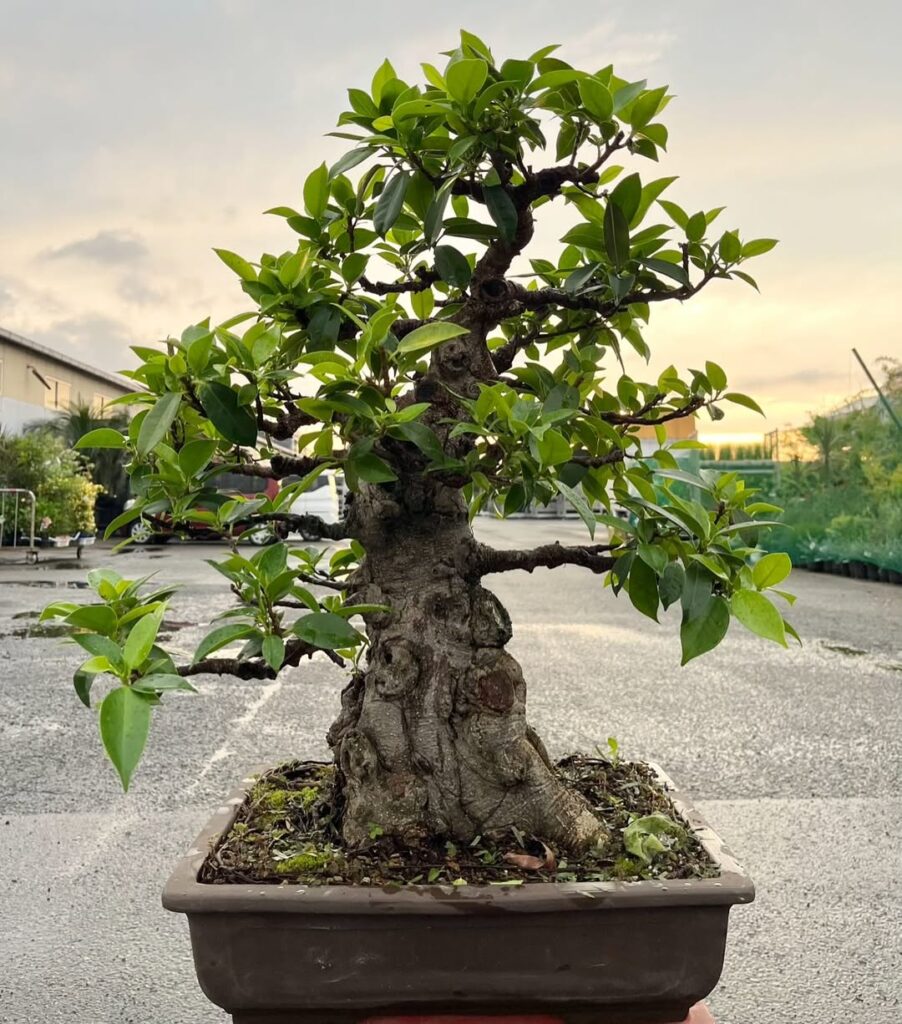
The Tiger Bark Ficus (Ficus microcarpa) gets its name from its distinctive trunk, which develops light-colored stripes and patches resembling a tiger’s markings as it matures. This compact ficus variety typically grows 2-6 feet tall when kept as a houseplant and features small, oval-shaped dark green leaves. It’s particularly popular for bonsai due to its naturally slow growth rate and ability to develop an attractive gnarled appearance with proper training.
- Light: Bright, indirect sunlight; can tolerate some direct morning sun
- Water: Keep soil consistently moist but not waterlogged; water when top inch of soil feels dry
- Soil: Well-draining potting mix rich in organic matter
- Humidity: Prefers moderate to high humidity; mist leaves regularly
- Temperature: 65-85°F (18-29°C); protect from cold drafts
- Fertilizer: Feed monthly during growing season with balanced liquid fertilizer
- Pruning: Regular trimming to maintain shape and encourage dense growth
9. Green Island Ficus Shrub
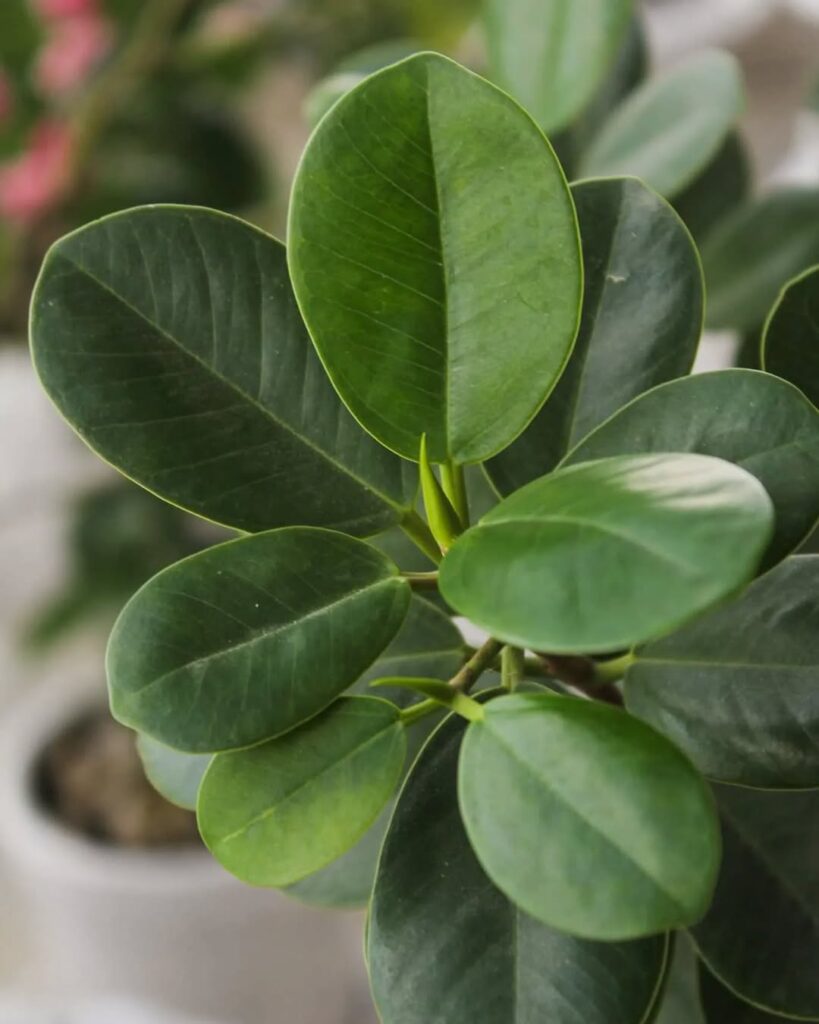
The Green Island Ficus (Ficus microcarpa ‘Green Island’) is a compact, versatile shrub variety of ficus that typically grows 3-4 feet tall and 4-6 feet wide. Its dense, rounded growth habit features small, dark green oval leaves that create an attractive, full appearance. This slow-growing cultivar can be maintained as a small shrub, hedge, or bonsai specimen, making it particularly suitable for container gardens, borders, and indoor spaces where a dwarf ficus is desired.
- Light: Bright, indirect sunlight indoors; partial to full sun outdoors in warm climates
- Water: Keep soil consistently moist but not waterlogged; allow top inch of soil to dry between waterings
- Soil: Well-draining, rich potting mix with pH 6.0-6.5
- Temperature: 65-85°F (18-29°C); protect from cold drafts and temperatures below 55°F (13°C)
- Humidity: Moderate to high humidity; benefits from regular misting
- Fertilizer: Feed monthly during growing season with balanced, water-soluble fertilizer
- Pruning: Tolerates frequent pruning to maintain shape and size
10. Willow Leaf Ficus Bonsai
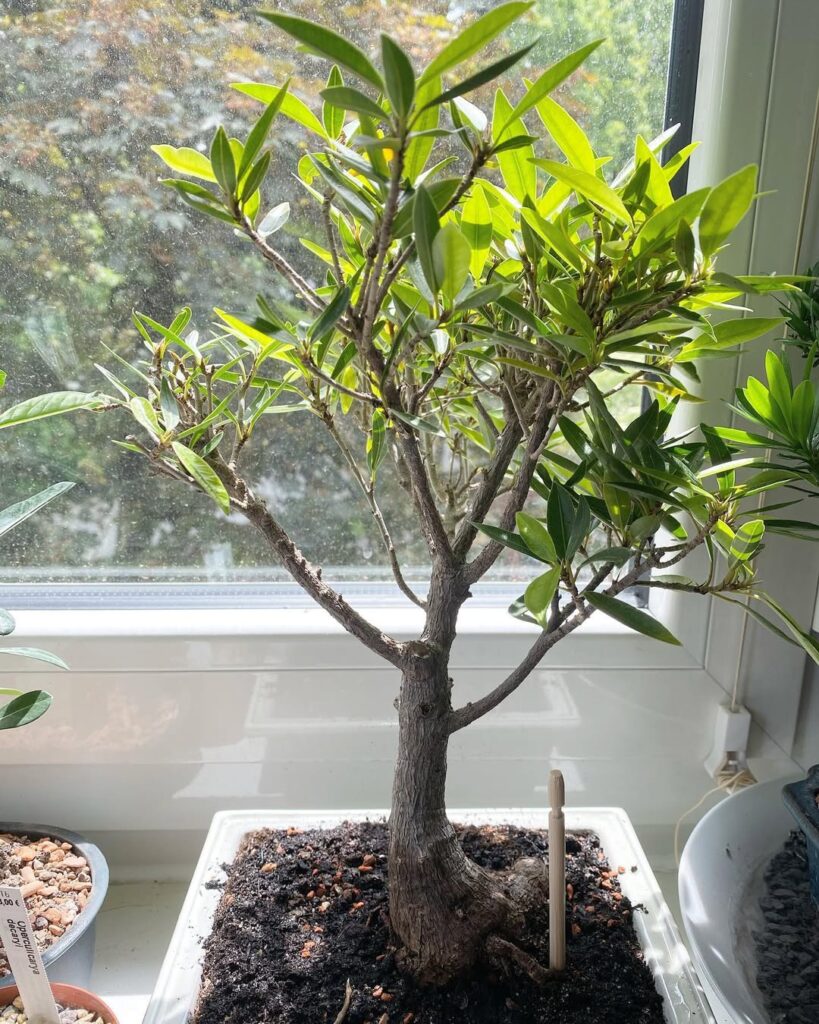
The Willow Leaf Ficus Bonsai (Ficus salicifolia) is a popular miniature tree variety known for its delicate, elongated leaves that resemble those of a willow tree. This compact bonsai features a graceful cascading growth pattern with slender branches and small, pointed leaves that create an elegant appearance. As a tropical plant, it demonstrates remarkable resilience and adaptability to indoor conditions, making it an excellent choice for bonsai enthusiasts of all skill levels.
- Light: Bright, indirect sunlight; can tolerate some direct morning sun; protect from harsh afternoon rays
- Water: Keep soil consistently moist but not waterlogged; water when top inch of soil feels dry
- Soil: Well-draining bonsai mix with equal parts akadama, pumice, and organic matter
- Humidity: Prefers 40-60% humidity; benefits from regular misting
- Temperature: Maintains best growth between 65-85°F (18-29°C); protect from cold drafts
- Fertilizer: Feed with balanced liquid fertilizer every 2-4 weeks during growing season
- Pruning: Regular trimming to maintain shape and encourage dense foliage growth
11. Mini Mexican Ficus Tree
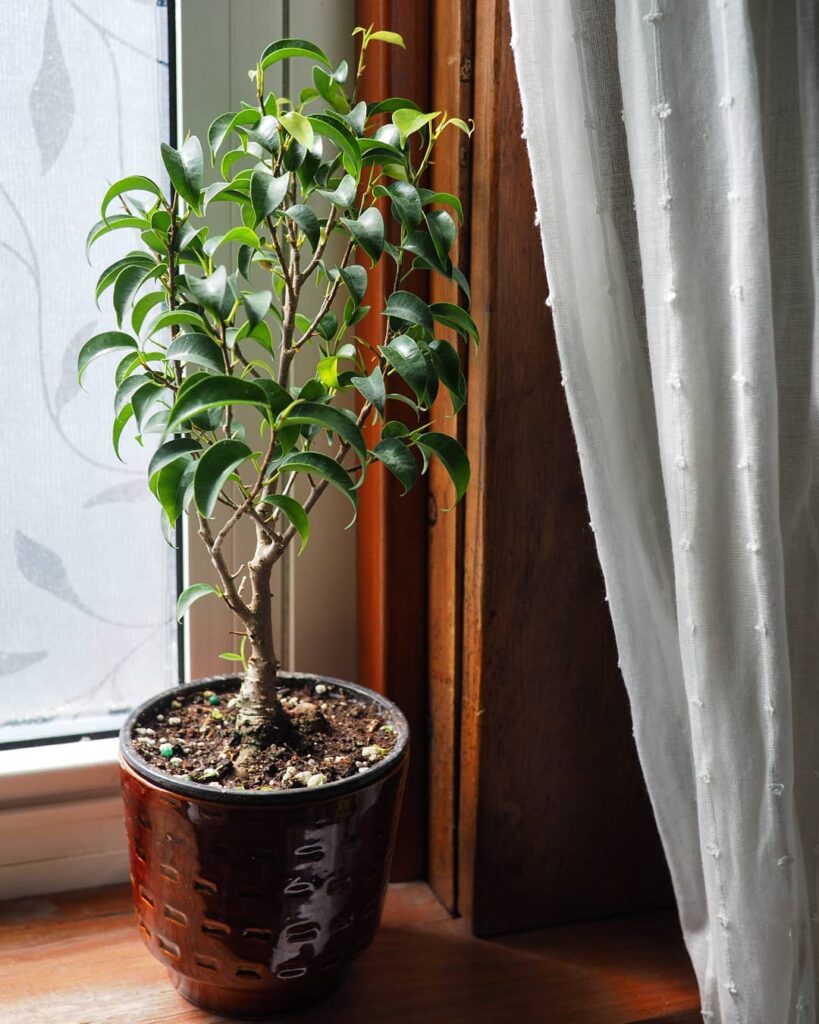
The Mini Mexican Ficus Tree (Ficus benjamina ‘Too Little’) is a dwarf cultivar of the traditional weeping fig, making it perfect for small spaces and bonsai cultivation. This compact variety typically grows to only 3-6 feet tall when mature, featuring dense, tiny dark green leaves and a naturally branching growth habit. Its diminutive size and attractive form make it an excellent choice for indoor growing, tabletop displays, or compact garden spaces.
- Light: Bright, indirect sunlight; can tolerate some direct morning sun but avoid harsh afternoon light
- Water: Keep soil consistently moist but not waterlogged; water when top inch of soil feels dry
- Soil: Well-draining, rich potting mix with good organic content
- Humidity: Prefers moderate to high humidity; mist regularly or use a humidity tray
- Temperature: 65-85°F (18-29°C); protect from cold drafts
- Fertilizer: Feed monthly during growing season with balanced liquid fertilizer
- Pruning: Tolerates regular pruning to maintain size and shape
- Pot: Use containers with adequate drainage holes; repot every 2-3 years
